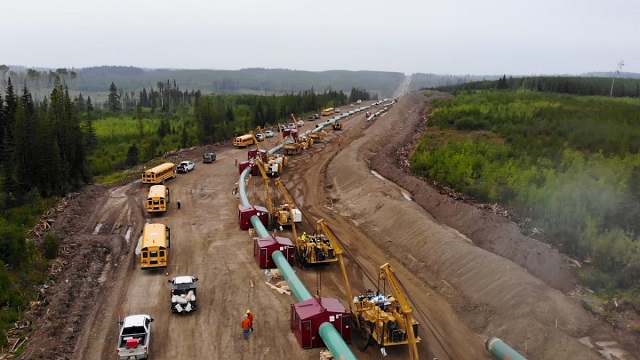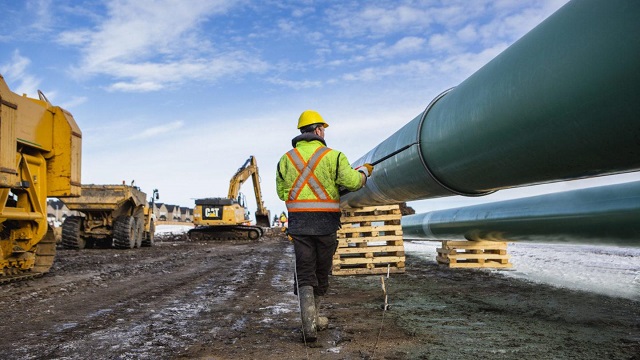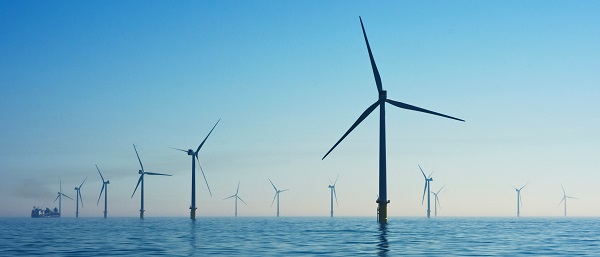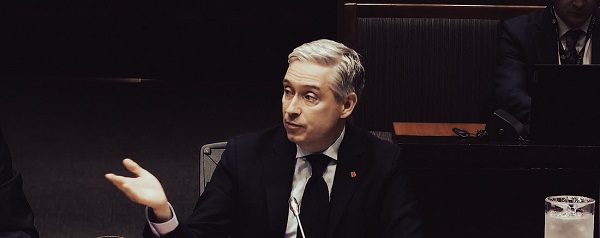Energy
Will Coastal GasLink Do for Natural Gas What TMX Did For Oil?

From Resource Works
New pipelines already proving their worth
It may have taken a decade, but Canada’s Asia Pacific Gateway now has two new pipelines providing egress for Canadian oil and natural gas to Asia. They are already adding billions to the Canadian economy. TMX alone has added $13 billion to the Alberta economy just in its first year of operation, according to one economist.
One year after Alberta crude started sailing to Asia via an expanded Trans Mountain pipeline and export terminal in Burnaby, Canadian natural gas is also now making its way to Asia, via the Coastal GasLink pipeline and LNG Canada export terminal in Kitimat. On June 30, the first LNG carrier loaded with liquefied Canadian natural gas left Kitimat. To date, half a dozen LNG carriers have loaded up in Kitimat. LNG Canada expects to load one LNG carrier every two days.
In the past, lumber and metallurgical coal have been B.C.’s two most valuable export commodities. By 2026, I wager natural gas will surpass both commodities to become B.C.’s most valuable export. It’s a little too early to tell just what kind of uplift LNG exports will give to B.C. and Alberta’s oil and gas sector, but if TMX is any indicator, it should be substantial. The economics math here is pretty simple. In 2024, half of the natural gas produced in Canada was sold to the U.S. at a price of $2.50 per gigajoule ($2.63 per MMBtu), according to the Canadian Energy Regulator.
The Japan-Korea Marker for LNG prices in Asia, by contrast, is about $15 per MMBtu. So Canadian natural gas sold in Asia is currently worth about six times more than pipeline exports to the U.S. Like Alberta crude oil, Canadian natural gas producers have been selling natural gas at a steep discount to the U.S. For oil, the differential has narrowed, thanks to the Trans Mountain pipeline expansion, according to Charles St-Arnaud, senior economist for Alberta Central. St-Arnaud estimates the price differential between Alberta and American oil has narrowed by about US$8 per barrel, since TMX was commissioned. He estimates this narrower spread has increased revenues by US$9 billion ($13 billion Canadian). “This means that the reduction in the oil discount has boosted oil revenues by about 10 per cent,” St-Arnaud concludes. St-Arnaud estimates this will boost revenues to the Alberta government by $5.3 billion.
The $40 billion question now is whether the Coastal GasLink pipeline and LNG Canada export terminal will provide the same economic uplift for B.C. that TMX has for Alberta. The B.C. government is banking on it. Budget 2025 projects natural gas royalties will double — from $576 million in 2024-25 to $920 million in 2025-26, and $1.2 billion in 2026-27. Heather Exner-Pirot, director of energy, natural resources and environment for the Macdonald-Laurier Institute, notes that even the Globe and Mail‘s editorial board has recently raised flags over B.C.’s massive $208 billion debt and worsening debt-to-GDP ratio. The taxes and royalties from LNG exports will provide important new revenues for B.C. “Your best hope for digging out some of that hole is natural gas exports,” she said.
There is currently such an over-supply of natural gas in Western Canada right now that it may take a while before we start seeing the kind of lift to B.C. gas that TMX gave to Alberta oil. Jackie Forrest, executive director of ARC Energy Research Institute, recently noted that, in 2024, Canadian natural gas sold for “about one-half of the U.S. price — effectively giving it away.” She estimates that, even if Canadian natural gas prices rise just $1 per gigajoule, as a result of new access to tidewater, “producers would gain an additional $7 billion per year.” “And this doesn’t even factor in the additional growth in gas and liquids production that new export terminals can unlock.”
In a recent ARC Energy Research Institute podcast with Mark Fitzgerald, CEO of Petronas Canada — LNG Canada’s second largest shareholder — estimated LNG Canada exports will be worth $2 billion a year to the B.C. economy. “Over the life of the project or the planning cycle that we use, that’s almost ($90 billion) in cumulative government revenue just to the government of British Columbia,” Fitzgerald said. He added: “That development, LNG Canada 1, with the upstream will create more than 100,000 jobs potentially annually across British Columbia.”
That’s just phase 1. The current output of LNG Canada — 14 million tonnes per annum (MTPA) — would double, if the LNG Canada partners sanction a phase 2 expansion. The construction of the Coastal GasLink pipeline facilitated two LNG export projects — LNG Canada and Cedar LNG. But we need another natural gas pipeline to fully exploit our abundant natural gas resources and get full value for them. The next large project in the queue is Ksi Lisims LNG and the associated Prince Rupert Gas Transmission (PRGT) pipeline. This project would add another 12 MPTA of export capacity, not to mention tens of thousands of jobs.
In 2020, the Conference Board of Canada projected Canadian LNG exports could increase Canada’s GDP by $11 billion per year, generate $2 billion a year in additional taxes and royalties, and create 100,000 additional jobs. Had we listened to the critics, who said there would be no market in Asia for Canadian oil and natural gas, and had we not built TMX and CGL, we would still be hostage to a single customer, the U.S., for our oil and gas. We would have foregone tens of billions of dollars in investments, revenue and jobs.
We will certainly hear the same arguments against PRGT and Ksi Lisims that we heard against CGL And LNG Canada. Let’s ignore them this time around, shall we?
Alberta
Alberta government’s pipeline proposal reveals truth nature of oil and gas opponents

From the Fraser Institute
Earlier this month, when Alberta Premier Danielle Smith announced that her government, in conjunction with major players in the oilsands, would propose a pipeline to carry Alberta’s products to tidewater off Canada’s west coast, she may have called the Carney government’s bluff (and the bluff of any other government that might be bluffing about pipelines).
In June, the Carney government passed Bill C-5 to purportedly eliminate the gridlock that prevents the construction of major energy infrastructure. But the government’s first list of projects to get the Bill C-5 treatment did not include any oil or gas pipelines (which was no surprise, in light of Canada’s hostile regulatory landscape that deters private-sector companies from investing time and money). In response to Smith’s announcement, federal Natural Resources Minister Tim Hodgson said any proposal for a pipeline must include “meaningful consultations with Indigenous rights holders” and close partnerships with “all affected jurisdictions.”
Meanwhile, in British Columbia, one of those “affected jurisdictions,” Premier David Eby is essentially denying that Smith’s proposal has significant private-sector support, implying it will require federal spending and that it’s a “direct threat to the kind of economy we are trying to build.” And yet, back in June, Eby said he was open to the idea of another privately-funded pipeline to tidewater in northern B.C., noting only that he doesn’t support “tens of billions of dollars in federal subsidy going to build this new pipeline when we already own a pipeline that empties into British Columbia,” referring to the Trans Mountain pipeline. In other words, it sounds like Eby has changed his tune.
In Quebec, Premier François Legault said in February that his government might be open to a proposed oil pipeline (Energy East) from Alberta—“For the moment, there is no project on the table,” he said. “If there is a project on the table, we will look at it.” Fast-forward to today. When asked about Smith’s proposal, leader of the Bloc Quebecois, Yves-François Blanchet (a close ally of Legault’s), said “Let’s imagine that Quebec is an independent and free country. We will go on the world stage to say that Alberta is destroying the environment of the whole planet.”
Clearly, while the federal government and key provincial governments have implied that they’re open to new pipelines (albeit, under an ever-changing roster of conditions), Premier Smith’s proposal has seemingly revealed the truth. They sound like the same implacable opponents of oil and gas development, in submission to the international climate change movement’s zero-tolerance policy for fossil fuels, that have dominated in Canada for a decade.
Daily Caller
Now Is A Great Time To Be Out Of America’s Offshore Wind Business


From the Daily Caller News Foundation
Is the push and pull in the energy and climate regulatory environment hurting the ability for companies to finance and complete energy projects in the United States? The head of Shell in the United States, Colette Hirstius, said she believes it is in a recent interview.
“I think uncertainty in the regulatory environment is very damaging,” Hirstius said, adding, “However far the pendulum swings one way, it’s likely that it’s going to swing just as far the other way.”
Hirstius was addressing the moves made by the Trump administration to slow the progress of the offshore wind industry, which was the crown jewel of the Biden administration’s headlong rush into a government-subsidized energy transition. Trump’s regulators, led by Secretary of Interior Doug Burgum and Energy Secretary Chris Wright, have taken a series of actions in compliance with executive orders signed by Trump since January to halt several projects that were under construction, roll back federal subsidies, and review permits they believe were hastily issued in non-compliance with legally required processes.
Dear Readers:
As a nonprofit, we are dependent on the generosity of our readers.
Please consider making a small donation of any amount here.
Thank you!
That hope seems discordant, coming as it does amid Shell’s ongoing effort to step back from offshore wind and refocus more of its capital budget back to its core oil and gas business following years of unprofitable ventures into renewables. It also seems fair to point out that the political pendulum about which Hirstius warns already swung wildly in favor of offshore wind and other wind and solar projects in the Biden administration. It is odd that Shell only now decides to roll out that particular warning.
Shell was pulling back from its major offshore wind investments while Trump was still fighting off efforts by an array of Democratic prosecutors to put him in prison. In June 2023, for example, the company announced its intent to offload its 50% share in the Southcoast project offshore Connecticut amid Biden era high inflation and supply chain challenges that were already rocking the industry at the time. Nine months later, Shell sold the interest to another party.
The company announced last December that it was “stepping back from new offshore wind investments” as part of a company-wide review implemented by then-new CEO Wael Sawan in mid-2023. A month later, it cancelled its interest in the Atlantic Shores project, writing off $1 billion in investments in the process. Shell’s ventures into the U.S. offshore wind arena had run head-long into economic reality long before the second Trump presidency came along.
That Atlantic Shores project has become an item of special interest inside the Interior Department’s Bureau of Ocean Energy Management (BOEM) in recent days. In a court filing last Friday, BOEM Deputy Director Matthew Giacona said the Bureau plans to conduct a full review of the process that went into approving Atlantic Shores during the Biden presidency. He also said the review would likely expand to other offshore wind projects given the administration’s concerns that Biden’s regulators failed to properly assess the true environmental impacts these major industrial installations create.
In addition to that, the Daily Caller’s Audrey Streb reported on Monday that Biden regulators gave the go-ahead to some of these offshore projects despite internal concerns expressed as early as 2021 that granting long delays in their decommissioning processes “increases risk to the federal taxpayer.” Offshore developers are normally required to provide financial assurance to pre-fund such costs, but big Danish developer Orsted and others were requesting delays as long as 15 years in that requirement to make their project economics work.
Hirstius’s concerns about regulation are absolutely valid: Having such certainty is a crucial element for any company to be able to plan its future business endeavors. But every presidency has a duty to ensure that actions by prior administrations meet the mandates of prevailing laws. It has long been feared that the Biden regulators cut important corners related to environmental and marine mammal protections to speed some offshore wind projects through the process.
As this current review process plays itself out, Shell might well find itself glad it cut its losses in this failing offshore wind sector when it did.
David Blackmon is an energy writer and consultant based in Texas. He spent 40 years in the oil and gas business, where he specialized in public policy and communications.
-

 COVID-192 days ago
COVID-192 days agoDevastating COVID-19 Vaccine Side Effect Confirmed by New Data: Study
-

 Red Deer1 day ago
Red Deer1 day agoThe City of Red Deer’s Financial Troubles: Here Are The Candidates I Am Voting For And Why.
-

 Business2 days ago
Business2 days agoTrump and Carney full of warm compliments but still no trade deal between Canada and U.S.
-

 Business2 days ago
Business2 days agoCanada Post is failing Canadians—time to privatize it
-

 Haultain Research2 days ago
Haultain Research2 days agoInclusion and Disorder: Unlearned Lessons from Palestinian Protests
-

 Business1 day ago
Business1 day agoGovernment distorts financial picture with definition of capital
-

 Daily Caller1 day ago
Daily Caller1 day ago‘We’re Really, Really Close’: Freed Gaza Hostages, Relatives Have High Hopes For Trump’s Peace Plan
-

 Business2 days ago
Business2 days agoFinance Minister ducks deficit questions, talks down to critics, and rebrands reckless spending as ‘transparency’.






